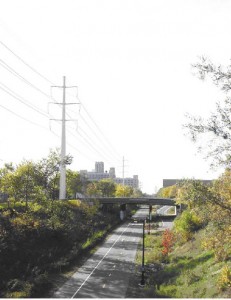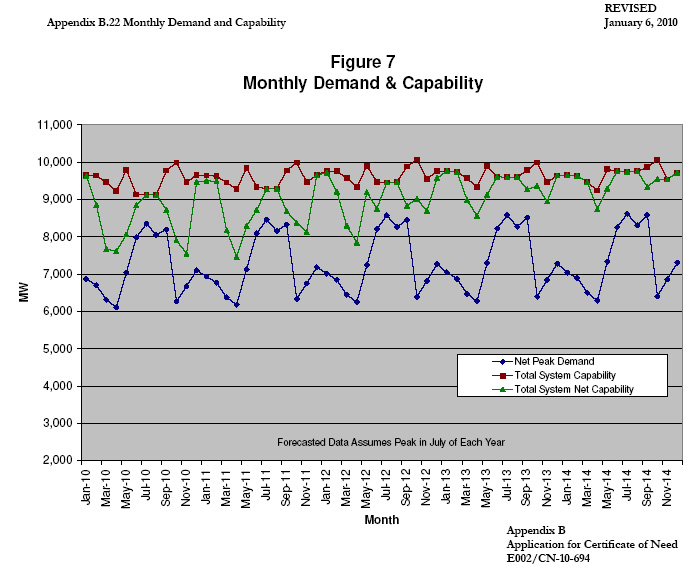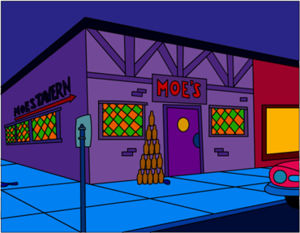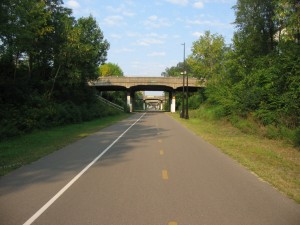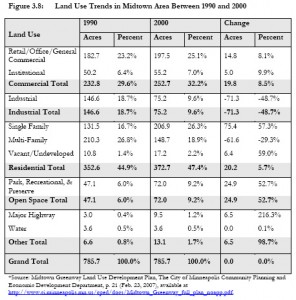Hiawatha Project “Need” Reply Comments due 4/29
April 7th, 2011
There’s a problem with not having a dog in the fight, and that is that I’ve not been tracking what’s going on in the Hiawatha Project Certificate of Need docket, or more correctly, what’s NOT going on. OH MY! Look what I just learned!
THE COMMENT PERIOD ON “NEED” ENDED 3/31/2011!!!
Yup, really, here’s the notice:
That was sent out in early March, setting the deadline for Initial Comments as March 31, 2011, and Reply Comments for April 29, 2011.
This Certificate of Need is going through the “informal process,” something arbitrary set up by the PUC and MOES, with no rules, and oh, it is going weirdly. Here’s the PUC Order authorizing the “informal process” that was issued in February:
Let me see if I understand this. The Environmental Report is not done, in fact it’s not yet begun, the Scoping Comments were due yesterday, April 6, 2011. And the notice for the Scoping of the Environmental Report notes that there will be a public hearing on need, as required by the statute and rules, after the Environmental Report is released.
… but the initial Comment period is closed, the Reply comment period ends April 29, 2011, and all of that will be over before the Environmental Report is done and before the “Public Hearing.” HUH? This makes no sense.
Worse, the only party to file comments by the March 31, 2011 deadline was MOES! There were how many intervenors in the Routing docket, and they raised such a stink about the need for a Certificate of Need proceeding that they rammed through a bill requiring it, and now that it’s begun (and now that their $90k was line-item vetoed by Pawlenty) they are all absent, not a one has bothered to show up and submit a single Comment. Give me a break! What does it take to put a comment in? And not one… and a few have submitted letters saying they won’t be intervening, notably the large funded intervenors:
…sigh… gee, I wonder why they’re not intervening…
Anyway, here’s what MOES has to say, and remember this is the beginning, not nearly the end:
So once again, let me see if I understand this. MOES has submitted Initial Comments recommending that this Certificate of Need be approved, and is basing that on the Application, and to support that Recommendation, using demand data from 2006, and using the Chisago Project record from 2007 as the basis for saying that a determination regarding undergrounding should be made in the routing docket. Really, that’s what it says, PLEASE read it!
MOES, CAN YOU SPELL “PREMATURE?”
Look what Xcel filed on January 6th, 2011, as a “Supplemental Filing” replacing their “Appendix B, Figure 7, Monthly Demand and Capability” chart (click to enlarge):
Compare that “Net Peak Demand” with the original chart — there’s a LOT more capability than demand… but hey, we knew that:
So can you believe this MOES Recommendation to grant the Certificate of Need? Where are my waders…
MOES clearly has not taken this chart into account showing a 10-15% decrease in demand. Plus MOES is not taking into account any Comments because theirs were filed on the first deadline! They’re taking everything Xcel says in its application and presuming it’s fact! Even the 55MW need claim based on 2006 data. HELLO?!?!
A Recommendation should come at the end of the process, not the beginning. DUH!
Well, here we go… Reply Comments due April 29, 2011.
Duck and cover!
ALJ: Underground Hiawatha Project
October 9th, 2010
Underground Xcel’s Hiawatha Project transmission. That’s BIG, it’s good news, except for one thing — “Who pays?” is still a question:
ALJ Heydinger’s Recommendation for Xcel’s Hiawatha Transmission Project
Problem is, cost allocation isn’t dealt with specifically, only explained, so no recommendation regarding that.
If the PUC went ahead, would it be spread across the Metro area, the full Xcel rate base, or???
For the SE Metro, and for the Chisago Transmission Project, if they cities would have agreed to shoulder the cost, undergrounding was no problem. But that’s not feasible for a city to pay. So now what? Will the PUC actually order undergrounding, with a broad rate base recovery?
Xcel’s Hiawatha Project Brief & Transcripts
June 21st, 2010
Xcel Energy, or Northern States Power, whichever, has filed its brief in the Routing docket for the Hiawatha Transmission Project.
Also filed is Notice that the transcripts are now available at local libraries, a big help because the cost is prohibitive, they’re not free here as they are in WI or available via FOIA as they are in New Jersey (called OPRA there):
Which states:
I write to advise that the transcripts for the evidentiary hearings held in the Hiawatha Transmission Project routing proceeding on April 12 – 21 and April 26 – 30, 2010, have been placed in the following libraries: East Lake Library, Hosmer Library, Franklin Library, Central Library, and Roosevelt Library. We have also provided an extra copy to the Central Library with a request that it forward it to the Nokomis Branch once renovations are complete. The transmittal documents are enclosed.
So those of you writing briefs now know where to go!!!!
Terrorist activity and electric infrastructure?
April 24th, 2010
Xcel Energy”s Hiawatha Transmission Project is sticking in my craw again. I’m having one of those “Xcel is evil” kind of days. Xcel is hiding reliability information under a claim of “Security.” How absurd can they get? Don’t they get that if I was going to blow up substations, a) I don’t need their stupid info to do it, and b) I would have done it a long time ago? Earth to Mars, that’s not my M.O. But noooooooooo…
I’ve been looking at Xcel’s SAIDI, SAIFI and CAIDI distribution reliability reports, one of the things I’m happiest about in the 2001 legislative session. Minn. Stat. 216B.029. Why? Because Xcel’s Scott Zima testified at the public hearing for the Hiawatha Transmission Line Project that the claimed “reliability” problems did not show up in their SAIDI, SAIFI and CAIDI reports. WAS ANYONE LISTENING?
What is SAIDI, SAIFI and CAIDI? They’re distribution reliability indices. Here are definitions stolen from Rochester Public Utilities 2009 Electric System Engineering & Operations Report:
- SYSTEM AVERAGE INTERRUPTION DURATION INDEX – SAIDI
SAIDI is defined as the average duration of interruptions for customers served during a specified time period. Although similar to CAIDI, the average number of customers served is used instead of number of customers affected.
The unit of SAIDI is minutes. A common usage of SAIDI is: “If all the customers on the distribution system were without power the same amount of time, they would have been out for _________ minutes”.
- SYSTEM AVERAGE INTERRUPTION FREQUENCY INDEX – SAIFI
SAIFI described the average number of times that a customer’s power is interrupted during a specified time period. “SAIFI-short” is calculated using the number of customers affected by momentary interruptions (such as brief breaker or recloser operations). “SAIFI-long” is calculated using the number of customers affected by sustained interruptions.
The units for SAIFI are “interruptions per customer”. A common usage of SAIFI is: “On the average, customers on the distribution system experienced _______ interruptions”.
- CUSTOMER AVERAGE INTERRUPTION DURATION INDEX – CAIDI
CAIDI is the weighted average length of an interruption for customers affected during a specified time period.
The unit of CAIDI is minutes. A common usage of CAIDI is: “The average customer that experiences an outage on the distribution system is out for ___________ minutes.”
Here’s some background info about SAIDI, SAIFI and CAIDI reports from Edison Institute:
Here’s the Minnesota rule about reporting SAIDI, SAIFI and CAIDI:
7826.0500 RELIABILITY REPORTING REQUIREMENTS.
Xcel has to file these reports annually. And since Xcel’s Mr. Zima’s testimony that the reliability problems they claim as the basis for need for the Hiawatha Project are NOT reflected in the SAIDI, SAIFI and CAIDI reports (WAS ANYONE LISTENING?), I spent some time looking at the annual reports filed this year:
Xcel’s Initial Filing – Docket 10-310
Xcel’s Initial Filing – Docket 10-310 – Attachment D – Part 1
Xcel’s Initial Filing – Docket 10-310 – Attachment D – Part 2
And there’s another older docket where similar information was recently filed:
Xcel’s Annual Filing – 02-2034 – Part 1
To search these dockets,go to www.puc.state.mn.us and click on “Search eDockets” and then plug in the docket numbers.
And here’s an example of what’s wrong with this picture – look at the crudely whited-out Feeder Line column:
Who cares? Well, I do… why? Because when they say that the distribution system is such a problem that they need a big honkin’ shiny new transmission line, and then one of their engineers testifies that this distribution “reliability problem” they’re whining about and inflicting an oversized transmission “solution” on a community about ISN’T showing up in the SAIDI, SAIFI and CAIDI distribution reliability reports, that’s a problem. IS ANYONE TRACKING THIS? It’s not rocket science, it’s basic vetting of their claims!
Looking at their letter in the filing in Docket 02-2034, there’s this amazing statement:
Security Data
The raw reliability data provided with this filing includes “security data” as
defined by Minn. Stat. § 13.37, subd. 1(a). Xcel Energy believes that some of the
raw data on the disks and/or that has been eFiled could be manipulated to reveal
the location and size of certain facilities that have been summarized in the
Monthly Report. The public disclosure or use of this information creates an
unacceptable risk that those who want to disrupt the electrical grid for political
or other reasons may learn which facilities to target to create the greatest
disruption. For this reason, pursuant to Minn. Stat. § 13.37, subd. 2, we have
excised this data from the public version of our filing.p. 5, Xcel’s Annual Filing – 02-2034 – Part I (emphasis added).
Excuuuuuse me?
The public disclosure or use of this information creates an unacceptable risk that those who want to disrupt the electrical grid for political or other reasons may learn which facilities to target to create the greatest disruption.
What a load o’ crap. It is so illogical — those they’re having problems with aren’t necessarily, and probably just AREN’T, the ones to target to create the greatest disruption!
So I calls up Xcel, I do… and leave a message with Bria Shea because Jody Londo who signed the cover letter with the “Security” note was not in, explaining what info in what dockets I’m looking for and that I’m wanting to sign a confidentiality agreement to get it.
But noooooooooooo, guess again. I get a call back from someone in “Legal” (I didn’t know they had an Illegal department) and here they are making a bogus argument about PUBLIC disclosure, and I’m asking for disclosure with a confidentiality agreement. She wants to know if I’m a party, which I’m not, there are no parties in these dockets. And even if a party, even with a confidentiality agreement, no, because it’s a SECURITY issue. Oh, yeah… right… I’m a terrorist, wanting their “feeder line” information to take out electricity to some select target… Guess she’s been talking to Mike Krikava, thinking only a terrorist would want to enter a 2005-MAPP map into a transmission proceeding. That’s as wacky as a judge thinking it’s appropriate to do a transmission proceeding without a map entered in as evidence!
So now I get to “evaluate my options.” It’s possible to do some triangulation with the reports and with the Attachments to Xcel’s Hiawatha Project Application, but… sigh… we all know what their concern is — that someone might read it and make some sense of it, and understand what it means.
Hiawatha Transmission Project public hearings
April 6th, 2010
What’s most disturbing about this project is that it’s just a small part of something much bigger that is laid out in the 2007 Biennial Transmission Plan, in their studies, stretching from a new “Cleveland” 345kV substation and line to the new “Hiawatha” substation, and from there, a 115kV line to the “new” Oakland/Midtown substation and down to a new “Penn Lake” substation (I remember one on Penn and 62 decades ago) and then to Wilson, which they admit had been recently upgraded and there’s room for expansion.
Here’s two pages of Chapter 7 of the 2007 Biennial Transmission Plan regarding this part of the world:
Plus they admit that the Hiawatha substation is planned with 50MVA transformers and room/plans for two more! Tripling capacity, at Hiawatha, to 150MVA. At Oakland, there’s “only” room for one more, the first is 70MVA and the expansion room/plan is for one more 70MVA, totaling 140 MVA.
From the Xcel Application, a chart regarding Land Use Trends:
Let’s see… what uses more electricity, Industrial (anyone remember Minneapolis Moline?) or Residential? Honeywell or Wells Fargo Mortgage?
Look what they’re using as their basis:
July 2006??? This is from their Hiawatha Application, Appendix D3, the South Minneapolis Electric Distribution Delivery System Long Term Study:
(Can’t get it now — says file is damaged)
Having looked through their studies, I don’t see any reason to not upgrade the distribution system and see where that leaves us, given that we’re in this depression.
